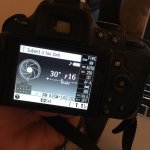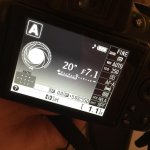You are using an out of date browser. It may not display this or other websites correctly.
You should upgrade or use an alternative browser.
You should upgrade or use an alternative browser.
A mode too bright !!
- Thread starter mdq8
- Start date
Horoscope Fish
Senior Member
Your Exposure Compensation is set to +5.
Thanks, but how can i lower the exposure compensation, using which button ?Your Exposure Compensation is set to +5.
I tried rotating the knob but then all the settings change !!
Read more: http://nikonites.com/d5100/35373-mode-too-bright.html#ixzz41HgZyuUE
ThanksWelcome!
Thanks, but how can i lower the exposure compensation, using which button ?
I tried rotating the knob but then all the settings change !!
Two ways, see pages 70 and 71 in the D5100 manual (Exposure Compensation, see index). Page 71 is the easy way, hold the +/- button (next to the shutter button), while rotating the command dial to change compensation. Watch the top LCD then, to see what it is doing.
Your exposures are shown as 30 seconds and 20 seconds. That is going to be extremely shaky unless tripod is used.
EDIT: Oops, I quoted page numbers from the D5100 Reference manual, which might not be what shipped with the camera?
The larger more complete Reference manual is available free at User's Manual - D5100 | Nikon Knowledgebase
Last edited:
Horoscope Fish
Senior Member
Press and hold the black and white +/- Exposure Compensation button while rotating the Command Wheel until the setting display shows "0".Thanks, but how can i lower the exposure compensation, using which button ?
.....
.....
Then I'd suggest you sit down and spend some quality time with the manual for your camera that Wayne has kindly linked you to so you can familiarize yourself with the external controls and their functions as well as the menus and the basic functions of your camera. This will save you much time and frustration in the future.
Last edited:
Thank you sirTwo ways, see pages 70 and 71 in the D5100 manual (Exposure Compensation, see index). Page 71 is the easy way, hold the +/- button (next to the shutter button), while rotating the command dial to change compensation. Watch the top LCD then, to see what it is doing.
Your exposures are shown as 30 seconds and 20 seconds. That is going to be extremely shaky unless tripod is used.
EDIT: Oops, I quoted page numbers from the D5100 Reference manual, which might not be what shipped with the camera?
The larger more complete Reference manual is available free at User's Manual - D5100 | Nikon Knowledgebase
Thank you so much,,Press and hold the black and white +/- Exposure Compensation button while rotating the Command Wheel until the setting display shows "0".
.....
View attachment 200392
.....
Then I'd suggest you sit down and spend some quality time with the manual for your camera that Wayne has kindly linked you to so you can familiarize yourself with the external controls and their functions as well as the menus and the basic functions of your camera. This will save you much time and frustration in the future.
... Then I'd suggest you sit down and spend some quality time with the manual for your camera ....
Agreed -- an excellent suggestion. If I can add this, don't do it while sitting in a chair inside the house in the evening darkness. Go outside on a sunny day and as you read the manual, experiment with the functions in good light. I spent an entire day messing with my D5100 when it was new and it the return on investment was fantastic.
I've seen a number of newbie posts from new owners puzzled by problems with photos of a hamster in a cage shot with a telephoto lens at midnight on auto-focus handheld with a 25 Second exposure time.
You have a fine camera and you're a member of a great website. Enjoy!
Keep in mind one thing when it comes to exposure--if the scene is an average brightness, you should be fine not having to make any exposure adjustments. If the scene is really bright, such as snow, reflections that include water, or something in direct sunlight, you might need to overexpose. If the scene is dark, such as nighttime, you need to underexpose. The rule of thumb is if it is bright, go brighter (overexpose). If it is dark, go darker (underexpose).


